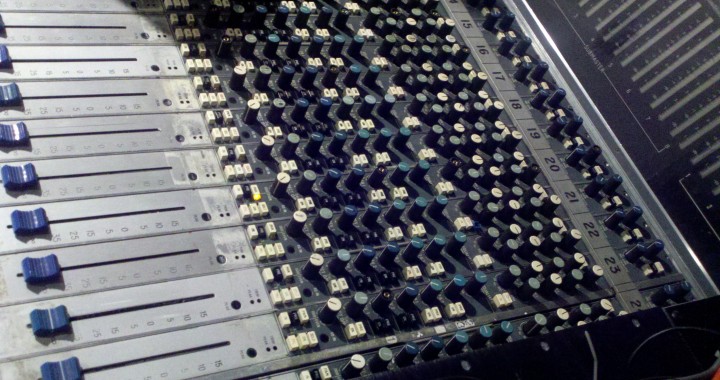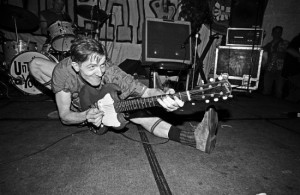UPGRADE YOUR FENDER BASS
Let's Make it a Pro Instrument
Let's Upgrade Your Fender Bass. Fender has defined the electric bass since its invention. James Jamerson one of the founding fathers of the Bass guitar is regarded as one of the greatest bassist that ever lived. He contributed greatly to the Fender Precision Bass guitar in the early 1960s. Many bass players’ first bass was a Fender. A Fender Squier Precision Bass costs under $400 and is excellent for beginners. Young musicians who play these instruments soon realize there are several limiting factors. This article discusses how to address these issues and make it sound like a dream bass.
The Back Story
Fender Musical Instruments Corp is a guitar manufacturing company that has an interesting history. Cardinal Bass Series, (CBS) first purchased Fender in 1965 for $13 million. To lower costs, CBS moved manufacturing offshore to Mexico, Korea, Japan, Indonesia, and China. These radical cost-cutting, changes to design and manufacturing took Fender’s reputation of excellence and left it in shambles.
As a result of this, CBS sold Fender in 1985 for $12.5 million and at that time Fender was about $11 million in debt. Fender moved manufacturing from Mexico, Korea & Japan back to the US. The Corona factory, opened in 1987 in Corona California currently employs about 700 workers and manufactures 350 guitars per day. These changes contributed to what Fender is today.
Current Day
You can get a ‘Made in Mexico’ (M.I.M.) bass for a cheap price. As mentioned before,a M.I.M. bass is common and is said to be the perfect instrument for beginners. The features and sound quality of the M.I.M. bass at that time held the back sales on these instruments. But there wa possibility to convert the M.I.M. bass into a worthy instrument.
A Fender Jazz Bass (M.I.M. or USA) is a bass which has a pickup located close to the bridge of the bass guitar. This minor adjustment had quite an impact on the tone of the instrument. It gave the bass guitar a more focused and brighter sound. The popularity of Funk music grew dramatically as a result of this change.
A Fender Precision Bass (M.I.M. or USA) is a bass which has a pickup closer to the neck that give a more warmer and fuller. The location of the pickups plays a very important role in the sounds produced. The Fender Precision Bass normally carries only one pick up. With only one pickup sound variation is limited.
A Fender PJ Bass is a custom hybrid which combines the Precision and Jazz pickup locations. This creates the ability to get the best of both worlds. PJ basses are the standard if you want serious versatility. The Fender Jazz Bass Specials (PJ) from the 80s had VVT controls along with a 3 way selector switch. You could solo either pickup or blend.
This article is about how to convert your student quality bass into something cool.
What Bass do you Have?
So let’s find out what kind of bass you have using your Serial Number. The Guitar Dater Project is a great resource. You can use that to plug in your serial number and find out where and when your bass was manufactured.
If you’d like to hear it from the horse’s mouth, refer to the Fender Product dating guide
I found out that my bass is a Fender American Standard Jazz Bass, Alder body, maple neck, rosewood fingerboard - and it was made in Corona California in late 1997. The value of bass is approximately $1k. So let’s turn this beater into an awesome sounding bass beauty.
New Pickguard
The standard Jazz pickguard needs to be changed to allow for the Precision pickup shape and position. There are many options for different pickguards; however, the Reggie Hamilton and the Warmoth J Bass pickguards are the most common and seem to be the most ideal. It’s reported that BlackTop and Aerodyne pickguards place the J pickups closer to the neck and cause low-mid cancellation.
- Reggie Hamilton pickguard
- The P pickup on the Reggie is closer to a regular P bass, just a tiny bit forward. I ended up going with this option.
- Warmoth J Bass pickguard
- The route for the Precision pickups is fairly low and extremely close to the edge of the pickguard. Warmoth does this to make the wood work customization easier on Jazz basses. The ½ of the Precision pickup which is under the E and A strings simply drop into the existing Jazz Bass without any wood work.
For this project, I decided to go with the Reggie Hamilton pickguard. Placing the pickups further away from each other will help with the sound when blending the two. Another benefit of using the Reggie Hamilton pickguard is the fact that you have an ‘undo’ option and can easily switch your PJ back to the JJ configuration.
The standard white (W/B/W) pickguard was the one i selected. My bass body is solid black and this seemed like the best ‘standard’ look. I paid $44.69 including shipping.
You also want to buy the Stewart MacDonald P pickup routing template ($5.55). I did some research on the Stewart MacDonald P pickup. There are a lot of complaints about the routing template; but, those posts seem to be from people who are not familiar with how to route a bass, a router, and the challenges around the router bit. Long story short, go with this routing template. If you’re using a pickguard, this will work perfectly.
The new pickguard doesn’t allow for much space to reach the truss rod adjustment. If you adjust it with the neck in place, you definitely take the chance of mucking up the wood or guard. One slip and you will not be happy. For your regular adjustments, you might also want to consider removing the pickguard.
Upgrading Your Fender Bass - PART 2
Neck
I learned that my bass has an Alder body, graphite reinforced maple neck, and a rosewood fingerboard (20 medium Jumbo frets). The neck that I currently have seems to be good but has a few dents in it. I did some research on a neck replacement but will probably only make this replacement only if needed. I’d like to get the new components on and determine whether it’s worth spending more money to take the bass over the top.
- Warmoth neck
- Quite expensive
- Spec’d Neck - $590
- AAA Flame Maple neck
- Ebony fretboard
- Standard Steel stiffening rods
- 1.5” Nut width
- Standard profile
- 21 Frets
- SS6115 Stainless Steel frets
- HipShot UltraLite tuning holes
- Arizona Turquoise Stone Inlays
- White Side Dots
- GraphTech White TUSQ XL Standard Nut
- Standard 4 Bolt mounting holes
- Clear Satin Nitro Finish
- Status graphite neck
- Fender Aerodyne neck
- USACG
Tuners
The stock Fender tuners are a bit on the heavy side, do not reverse, and have a decent amount of ‘give’. The HipShot Ultralite tuners are lighter - which helps the bass to balance better. They have a 20:1 gear ratio and really stay in tune. The additional tension also helps with sustain. Another cool thing -- They have a Bass Extender tuner that allows you to drop your E to D (or even lower).
Bridge
The Tuners, Nut, and the Bridge are very important. These are the points where the strings make contact with the instrument, they make sure that tension is maintained, and they make sure that the vibration of the strings translates to the body of the instrument. One thing that I learned about bridges is that some allow for very easy string spacing adjustments. For a rebuild such as this, I thought that this level of control was important - especially since I wasn’t sure how much our pickup changes would differ from stock spacing.
- HipShot 4 String A Style with Fender Mount
- 5 out of 5 stars on Amazon
- More amazing reviews on both Amazon and TalkBass.
- Looks like a drop in replacement but I can’t tell the weight of the bridge.
- Since I’m buying HipShot tuners, I’m positive that the color of the bridge will match the tuners
- 5 out of 5 stars on Amazon
Other Bridges to Consider
- HipShot Triple Lock Down Chrome
- Great reviews on this bridge but I’m not sure of the guitar luthier routing requirements.
- Babicz TKTK
- 5 out of 5 stars on Amazon
- Supports String Through Body and the modern 3 hole Fender mount pattern
- 3.7 oz
- Leo Quan Badass Bass II bridge
- Needs professional installation
- Very high action
- Seems like the company is dormant
- The Badass II bridge is a cast Zinc bridge (lighter weight).
- Gotoh 201B-4
- Gotoh has great reviews; however, I can’t find any descriptions of their products (not even on their website). Not having details about weight, capabilities, method of attachment, etc, it’s very hard to blindly purchase the Gotoh and move forward.
- Ken Smith bridge
- Machined from solid brass
Pre-Amp
There is a strong argument for using an external outboard preamp. Most bass players have multiple instruments. An external preamp allows the bassist to utilize similar tonal qualities and controls across multiple instruments. For any bass rebuild, you have to think about preamps. I went with the Audere preamp because it matches what I have on another bass.
- Audere Pro JZ3 preamp
- Nordstrand
- Sadowsky preamp
- EMG preamp
- Bass Mods preamp
- SansAmp
Upgrading Your Fender Bass - PART 3
Pickups
The biggest issue with a standard Jazz bass is a massive hum. This is a result of both the bad shielding and 60 cycle hum from the single non-humbucking pickups.
To balance the Jazz pickup on the bridge with the Precision pickup(s) on the neck, it’s important to match the output and resistance of the two.
Sets to consider
Fralin standard P, 10% overwound J
Lollar standard P, 10% overwound J
Sadowsky P-J
Bridge Jazz Pickup
- Fender Super 55's Split-Coil Jazz pickup [$65]
- 5 of 5 stars on Amazon
- “more growl than a Nordstrand NJ4SV”
- “raw woody single-coil sound”
- “clean, bright, full and punchy - with all the low end and mids”
- “matches well with the Fralin”
- Fits under the standard pickup covers
- DC Coil resistance, 10.5k to 11.6k
- 5 of 5 stars on Amazon
- Bill Lawrence J-45
- I actually bought these pickups. But the company took such a long time to deliver them that I ended up finding an alternative. I’ll consider writing an update to this article - maybe if I do another of this bass rebuilds.
- Absolutely phenomenal pickups
- ceramic magnets
- Take forever to get ship (back ordered for months)
- And the company doesn’t communicate.
- These are grounded pickups - which lower noise
- Lindy Fralin Split Jazz pickups
- DC Coil resistance :: 8.5 Kohm - 9 Kohm
- 5mm wide magnets
- Use ALNICO V magnets and 42 gauge Heavy Formvar wire, they are all hand wound to vintage specifications
- “too smooth and refined”
- Nordstrand NJ4SV
- Made with 60s era correct Heavy Formvar wire and Alnico V magnets. In winding these pickups, they use a simulated hand wound pattern.
- DC Coil resistance ~8K
- DiMarzio Ultra-Jazz DP148 Stacked Humbucking J Bridge
- DC Coil resistance :: 12.3 Kohm
- ceramic magnets
- Output :: 250 mV
- “noticeable difference from a standard Jazz pickup
Precision Neck Pickup
- Lauzon P-Bass/Strat Pickup ($90)
- The Lauzon sounds larger, darker and seem to reveal more of the wood character of the instrument. It's more of a vintage 60's tone
- The Lauzon seems to pack more tone throughout its frequency spectrum.
- “an Alnico pickup normally does not have as much punch as ceramic, here it does and this was one of the design objectives of Etienne Lauzon. In a certain way the Lauzon gets the punch, the extended tonal frequencies and manage to do all this while sounding vintage.” - Laurent of TalkBass
- Bill Lawrence P-46
- ceramic magnets
- MIJ Precision pickup
- Model One
- Sadowsky pickups
- Seymour Duncan Antiquity II P/J pickups
- Stewart McDonald Golden Age pickups
I really wanted to pair the Bill Lawrence J-45 with the Lauzon P-Bass/Strat Pickup but, because of the slow delivery time, I ended up going with the Fender Super 55 as the bridge pickup. I might switch it later if I have time. The Lauzon precision neck pickup sounds AMAZING!!!
Ramp
So my good friend, Matt Garrison, is very well known for his 4 finger technique and especially light touch approach to bass. He and I have chatted about his technique a few times. What I started to see with my own playing is that I played on top of my pickups fairly consistently. When using a ramp, you increase the range of feeling you get from playing over the pickup. You can read a bunch about ramps here.
For this project, I decided to go with an East Indian Rosewood.
Other Considerations for Updates
- 250k CTS pots and a .047 tone cap
- Switchcraft 3 way switch with a variable treble bleed circuit
- Bourns 250k mini pot for tone
- Russian .047 uF NOS PIO cap
- Refinish: It's simple and easy to strip a Mexican body. With a heat gun and small metal scraper, you can get the finish off an MIM J body in less than an hour.
- When a P and J are in series, you get UBER thump. Example of wiring in Series
- Shielding paint, foil, and a grounding job
- Replace the capacitor
- Nut
- Strings
- Tone Wood Index
Research
- Lauzon Pickups
- Pickup Location
- Stacked vs Split
- Projekt Blue II
- PJ Mod MIM
- Nordstrand NJ4SV
- History of Fender Guitars
About Ray Archie
Ray Archie is the Executive Director of Notes to the Soul, Inc. is infinitely the musicians’ advocate. It comes from the heart as Ray is also a musician who plays cello, bass, & piano and has performed internationally with Leonard Bernstein, Michael Tilson-Thomas, LSO, SF Symphony orchestra, & many others. Ray crosses the boundaries of classical, jazz, rock, hip-hop, and soul music. Ray is an award-winning musician who has toured extensively worldwide since age 12. He has over 30 years of music industry experience, 12 years of broadcast experience, created large-scale consumer-facing products and has set international standards for audio.



